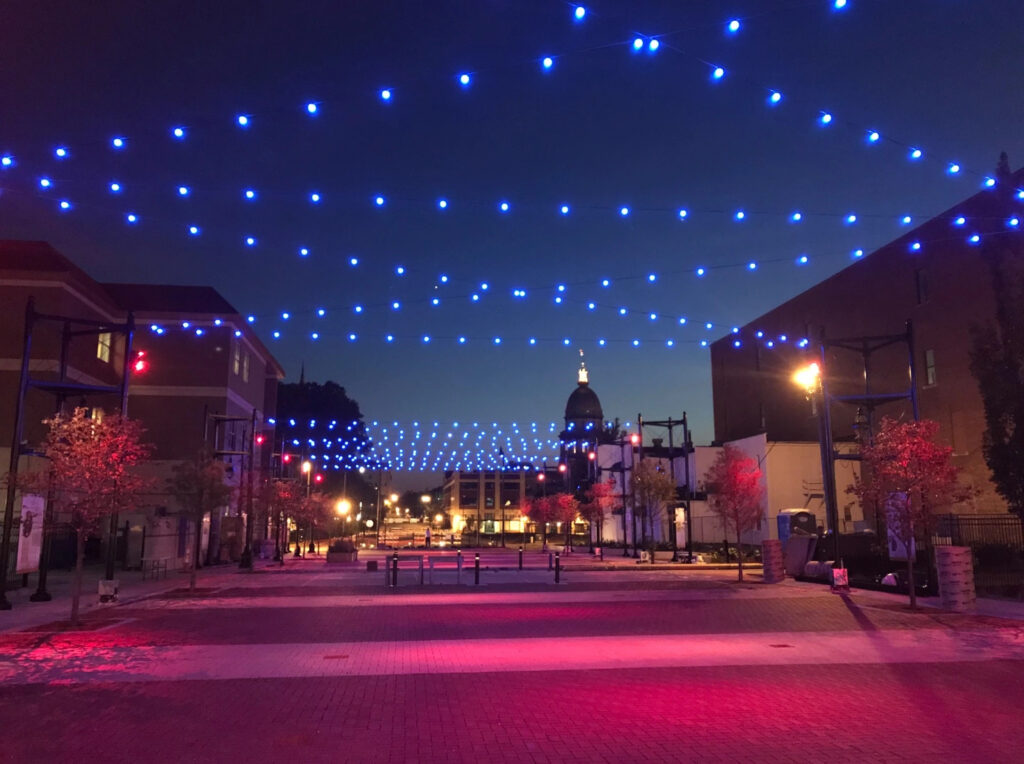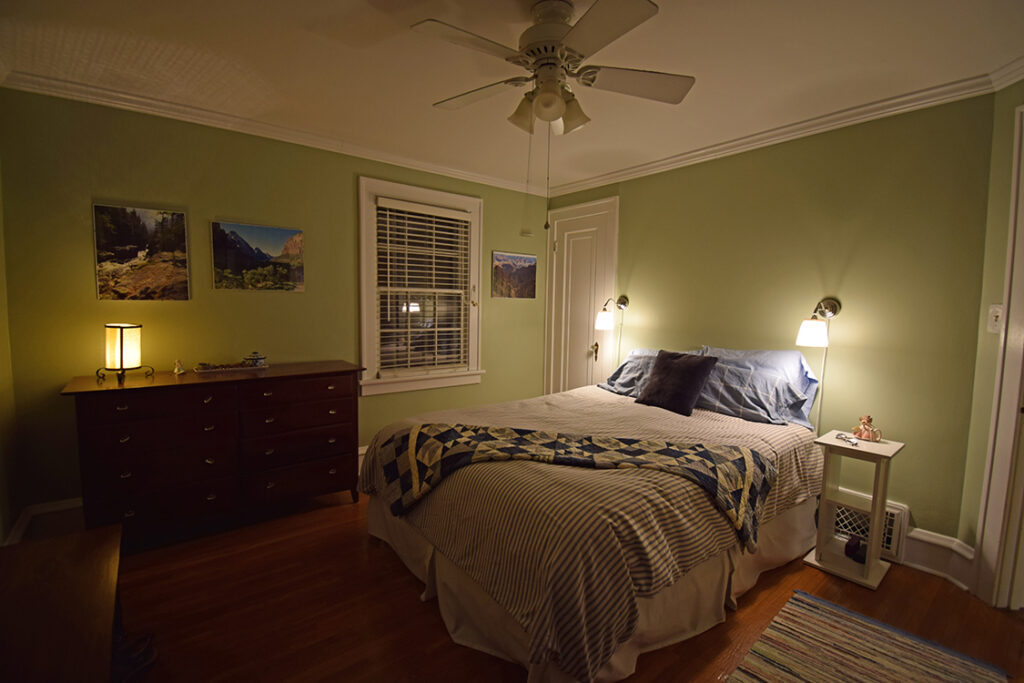It is winter, between Christmas and New Year’s, and a perfect time to write about lighting and darkness. All around town, otherwise nondescript homes are festooned with thousands of tiny lights. Twinkle lights on downtown trees add glow to the sidewalks and storefronts, and in many living rooms are even more trees and more lights. We have extra lighting on our mantel, above our kitchen sink, on bookshelves, and even on my desk.
And, though the days just began to grow imperceptibly longer, there is more darkness than any other time of year.
It is no coincidence that Christmas and Solstice are nearby each other, celebrations focused respectively on the birth of a Son and on the return of the sun. We need a thousand lights when the nights get so long that some of us go for days without seeing natural light in our homes.

As a lighting designer, this is the time of year that my craft is more noticeable and more critical than any other. It matters more how my living room is lit, because the sun is long down by the time I relax on the couch after dinner. It matters how my dining room is lit, because it has been months since the sun shone on our table over the dinner hour. It matters how my bedroom is lit, because I am forced to turn on lights in the morning and in the evening when I go to bed. It matters how much artificial light I enjoy because my body and soul are seriously short on natural light.
Today, however, I am thinking about the importance of darkness in our world. Darkness and shadow and shade are half of my work- I talk about where to put light but that also means I am intentionally choosing where not to put light. For example, I want light on the kitchen counters but not too much on the floor between them. I want darkness on my floors.
I want light on my front stoop but not too much in the yard. I want darkness in my yard.

I want light in my bedroom for dressing but I want enough darkness to preserve my circadian rhythm.
I want light on my sidewalk but enough darkness to reveal the stars.
I want light on my artwork but enough darkness to obscure the blank wall around it.
I want light on my wife’s smile but enough darkness to hide both of my chins.
I want light on the road but enough darkness inside the car that my attention remains in the proper place.
I want light on my stairs but enough darkness for my eyes to be comfortable.
You get the idea, I hope. Many lighting effects cannot be achieved without darkness. A spotlight on a performer is useless if the rest of the stage is not noticeably darker. A candle on a dining table is not as romantic if there is no darkness at the edges. Twinkle lights strung on a tree are not as beautiful if the tree is no brighter than its surroundings.
So today I share good news: from here until Summer Solstice, we will get a little more natural light every day. Meanwhile, pay attention to the darkness. Perhaps you will appreciate it a little more each day, too.

